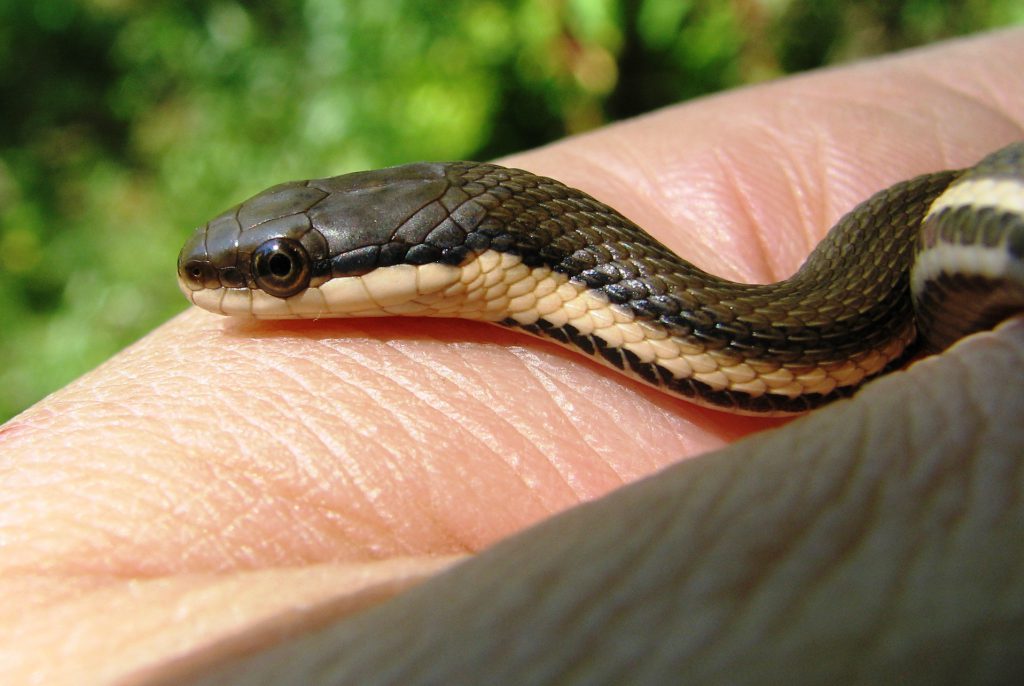Endangered Snake Species Found in Construction Areas
In Ozaukee and Juneau counties. State DNR issued notices.

Newborn queensnake. Photo by Pete and Noe Woods. (CC BY-SA 2.0)
Two separate incidental take notices were issued for rare snake species in different parts of the state. In Juneau County, a network of drainage ditches are planned for an area inhabited by the state endangered eastern massasauga rattlesnake. In Ozaukee County, the state endangered queensnake has been detected near a bridge project.
Incidental take notices are issued by the Department of Natural Resources (DNR) when a protected species is confirmed as living in the vicinity of a development project. Both plant and animal species can be issued incidental take notices, which disclose that individuals of a threatened species may be lost due to a project. However, these losses are normally not significant enough to affect the species’ overall survival.
While the massasuga is venomous, and even more so than most rattlesnakes, the rare species also injects less venom than other snakes. Bites from both the timber rattler and the massasauga are remarkably rare. The DNR notes that timber rattlesnake bites happen, on average, once every four years in Wisconsin, with only one fatal bite since 1990. It’s important to note that the massasuga is much rarer than the timber rattlesnake. Venom is also a very valuable resource for snakes to catch food.
In Ozaukee, the non-venomous queensnake may see incidental losses due to the Covered Road Bridge Project. The state endangered queensnake prefers clear warm-water streams and small rivers where it hunts crayfish. They’ll also bask along stream shores, and is an specialist in hunting crayfish. The species even occupies crayfish burrows during the winter, and are active from April through October. They normally breed in mid-May until mid-June, and give birth to live young in August or early September. Like the massasuga, the queensnake does not lay eggs. The species is found in a handful of counties in southeastern Wisconsin.
Two endangered snake species found in construction areas was originally published by the Wisconsin Examiner.





















